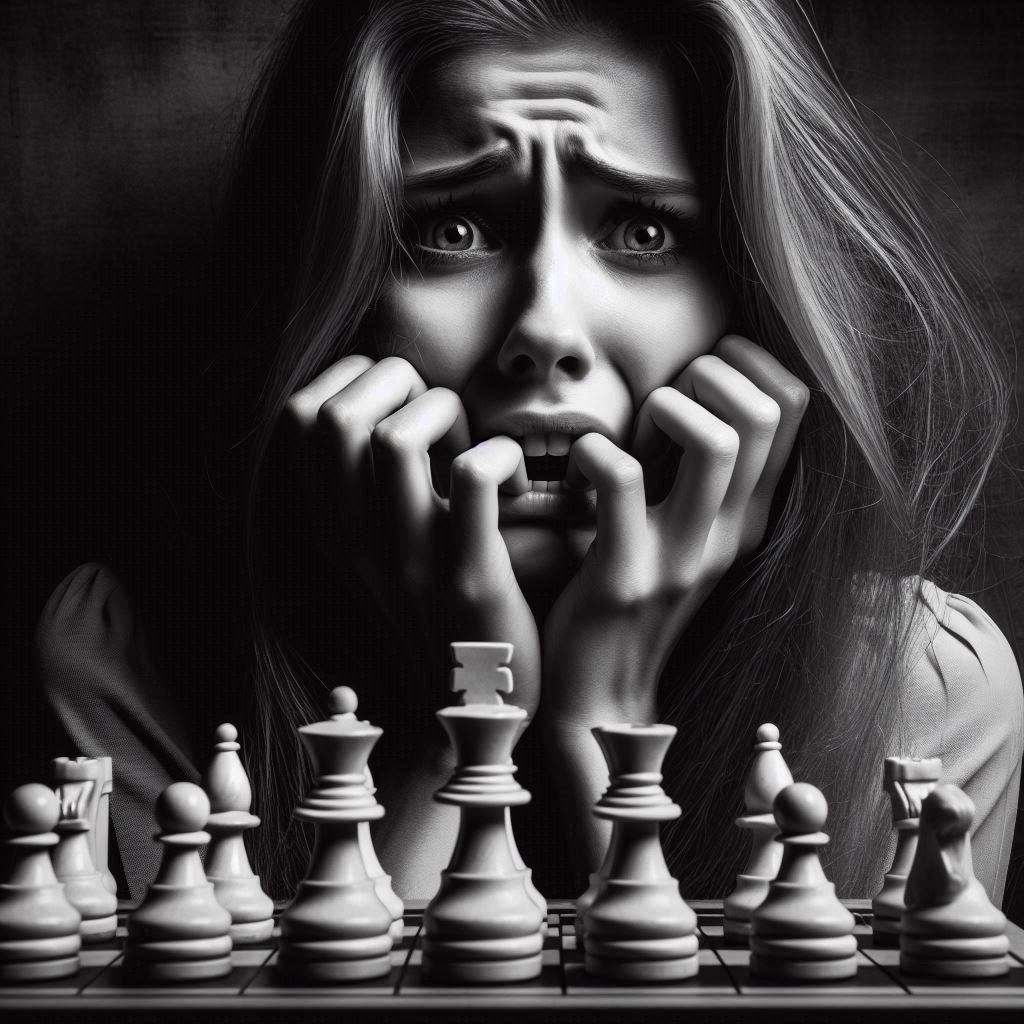In a culture where youth and beauty are often glorified, the psychological stress of aging can be profound. The fear of developing wrinkles can lead to extreme measures, such as excessive use of anti-aging products, frequent cosmetic procedures, and a pervasive sense of dread. But what exactly drives this fear, and why is it more prevalent now than ever?
By exploring the roots of rhytiphobia, we can uncover its cultural and psychological dimensions. This blog will shed light on the complex interplay between societal standards of beauty and individual self-perception, offering insights into how this fear manifests and how it can be addressed. Whether you’re curious, concerned, or experiencing rhytiphobia yourself, understanding this condition is the first step towards overcoming it.
Defining Rhytiphobia
Rhytiphobia is a term that not many people are familiar with. It refers to a fear that might seem strange, but is very real for those who suffer from it. Below, we will explore what rhytiphobia is and where the word comes from.
Etymology of the Term
The word “rhytiphobia” has Greek origins, like many medical terms. It combines two parts: “rhyti” and “phobia.”
- “Rhyti” comes from the Greek word “ῥῠτῐ́ς,” which means wrinkle.
- “Phobia” is also Greek, meaning fear. You see it in many other words like arachnophobia (fear of spiders).
When we put these together, we get “rhytiphobia,” which means the fear of wrinkles. It’s a special type of fear, often linked to the anxiety about aging and looking older. For some, the idea of getting wrinkles can cause strong feelings of worry and stress, even though it might not be a common fear.
Why Does This Fear Exist?
People who have rhytiphobia often feel extreme anxiety about any sign of aging. This isn’t just about vanity. It’s about deeper feelings and thoughts about getting older, losing youth, and the changes that come with age. For these people, a simple wrinkle can trigger thoughts of losing control and facing unwanted changes in their lives. The fear goes beyond just appearance; it connects to deeper fears of aging and even mortality.
In summary, rhytiphobia, or the fear of wrinkles, combines the Greek words for wrinkle and fear. It’s more than just a fear of appearance; it’s tied to deeper anxieties about aging and change.
Causes of Rhytiphobia
Rhytiphobia, the intense fear of wrinkles, isn’t just vanity or superficial concern; it’s a complex issue with deep psychological and cultural roots. Understanding the causes of this phobia can shed light on why some people are gripped by fear at the thought of aging.
Psychological Factors
Mental health issues often play a key role in the development of rhytiphobia. Anxiety, in particular, is a common contributor. People who already deal with anxiety might find themselves overwhelmingly fearful of any change that signifies aging, including wrinkles. It’s like a constant worry about the unknown, where each new line becomes a reminder of time passing. Low self-esteem can also fuel this fear. When individuals don’t feel good about themselves, the thought of looking older can seem like another blow to their self-worth.
Additionally, obsessive-compulsive tendencies can make someone focus intensely on their appearance. This intense scrutiny can kickstart a cycle of fear surrounding anything perceived as a flaw, like wrinkles. The mind becomes a relentless critic, and every glance in the mirror is another chance for judgment.
Cultural Influences
Cultural factors are equally influential. Societal beauty standards bombarded from all sides suggest that youth is the epitome of beauty. Look at any magazine cover or billboard, and you’ll often see flawless, wrinkle-free faces staring back at you. These images set impossible standards, making aging seem undesirable or even wrong.
Media representations can make things worse. Movies, TV shows, and advertisements often glorify youthful appearances while ignoring the beauty of aging naturally. It’s as if society places a premium on staying young, creating a pressure cooker environment where growing older feels like a failure to some.
In many cultures, youth is associated with vitality, success, and attractiveness. This can make aging — and the wrinkles that come with it — feel like they are stripping away your value. It’s not just about looking good but feeling relevant and respected.
Key Takeaways
- Mental Health Concerns: Anxiety and low self-esteem can heighten the fear of wrinkles.
- Societal Pressures: Beauty standards and media portrayals push the idea that wrinkles are undesirable.
Understanding these causes can help us empathize with those who suffer from rhytiphobia. It’s not just about vanity; it’s about deep-seated fears and societal pressures that shape our perceptions of self-worth and beauty.
Symptoms of Rhytiphobia
Rhytiphobia, the fear of wrinkles, can deeply impact a person’s daily life. While it’s not a commonly discussed phobia, its symptoms can be quite severe, affecting both emotional well-being and physical health.
Emotional and Physical Symptoms
Emotional Symptoms:
- Anxiety and Panic Attacks: Rhytiphobia can cause intense anxiety, especially when someone sees wrinkles on themselves or others. This anxiety can escalate into full-blown panic attacks.
- Distress and Irrational Fears: Those with rhytiphobia may have an overwhelming, irrational fear of aging and wrinkles, leading to constant worry and stress about their appearance.
- Avoidance Behavior: People might avoid mirrors, photos, or social situations for fear of seeing or being seen with wrinkles.
Physical Symptoms:
- Sweating and Trembling: Just the thought or sight of wrinkles can cause excessive sweating and trembling.
- Rapid Heartbeat and Shortness of Breath: Similar to other phobias, the presence of aging-related stimuli can lead to a pounding heart and difficulty breathing.
- Dry Mouth and Choking Sensations: The anxiety can also lead to a dry mouth and a sensation of choking or difficulty swallowing.
- Flushing and Chills: Sudden hot flushes or chills can occur, showcasing the body’s response to extreme fear.
Impact on Daily Life
Rhytiphobia, the fear of wrinkles, can seep into our daily routines and affect our mental wellbeing, social life, and how we view ourselves. This fear isn’t merely about appearance; it often leads to significant changes in how we act and what choices we make.
Social Interactions
How Fear of Wrinkles Affects Social Life
If you’re afraid of wrinkles, you might start to avoid social situations. Imagine if the mere thought of someone noticing a wrinkle on your face began to cause you anxiety. You might skip out on parties, family gatherings, or even a simple coffee with a friend. Over time, this can lead to social isolation. The fear of being judged or scrutinized for something as natural as aging can create unnecessary barriers between you and others.
It’s common to feel anxious about meeting new people or even talking to old friends when you’re constantly worried about your appearance. You might avoid eye contact, wear heavy makeup, or even use filters for any photos taken. This anxiety isn’t just about shyness; it’s about a deep-seated fear that can make social interactions a source of stress rather than enjoyment.
Impact on Personal Relationships
Over time, this behavior can strain relationships. Loved ones might not understand why you’re withdrawing, and they may take it personally. Friendships and family bonds suffer when interactions become infrequent or filled with tension. Imagine if your loved ones couldn’t understand why you prefer texting over face-to-face conversations. It can become challenging to maintain strong relationships under these circumstances.
Self-Care and Lifestyle Choices
Extreme Beauty Regimens
People with rhytiphobia might turn to drastic measures to prevent wrinkles. This could include:
- Frequent use of anti-aging products
- Regular visits to dermatologists or beauty clinics
- Cosmetic procedures like Botox or fillers
While taking care of your skin is generally good, an obsession can turn harmful. Overuse of products and frequent medical procedures can take a toll on your physical and mental health. These extreme measures often lead to stress and financial strain – all in the name of maintaining a youthful appearance.
Avoidance of Aging-Related Activities
Life brings natural joy when you engage in activities you love. But, rhytiphobia can make you avoid things that might cause aging signs like sun exposure or certain foods:
- Outdoor activities: Fear of sun damage might deter you from hiking, swimming, or even a sunny walk in the park.
- Food choices: You might restrict your diet to avoid foods believed to cause wrinkles, leading to an unbalanced diet.
- Skipping fun events: Birthdays and anniversary parties might be avoided if they involve lots of photos or socializing.
All these limits can keep you from fully enjoying life. Picture yourself declining beach trips with friends or skipping your favorite outdoor concert just to avoid the sun. It’s a high price to pay for “ageless” skin.
Fear of wrinkles affects more than just how you look. It can reshape how you live, connect, and find joy in everyday moments. The pull towards extreme beauty routines and avoiding certain activities can confine your world, making it smaller and less fulfilling. Recognizing these impacts can be the first step toward embracing a healthier, more balanced view of aging.
Treatment Options for Rhytiphobia
Treating Rhytiphobia involves multiple approaches that help individuals manage and overcome their fears. By using a variety of therapeutic techniques, people with Rhytiphobia can address their fear of wrinkles and aging in a healthy, constructive way.
Cognitive Behavioral Therapy (CBT)
Cognitive Behavioral Therapy, or CBT, is a widely recognized method for treating phobias, including Rhytiphobia. This therapy helps reshape negative thought patterns related to aging. Here’s a closer look at how it works:
- Identifying Negative Thoughts: The first step in CBT is to identify the negative thoughts that contribute to the fear of aging. These might include thoughts about looking unattractive, losing vitality, or losing social relevance.
- Challenging Irrational Beliefs: Once these thoughts are identified, the therapist helps the individual challenge these beliefs. For example, they may question the likelihood of these fears coming true and explore more realistic, positive outcomes.
- Developing Healthy Responses: Finally, CBT works by helping the individual develop healthier responses. This might involve practicing self-compassion, appreciating the natural aging process, and focusing on aspects of life that are fulfilling regardless of age.
By working through these steps, CBT helps transform the way someone with Rhytiphobia thinks about aging, making their fears more manageable.
Exposure Therapy
Exposure Therapy is another effective method for addressing Rhytiphobia. This type of therapy involves gradually exposing the individual to aging-related situations in a controlled and safe manner to alleviate fears.
- Starting Small: The process typically starts with less anxiety-provoking situations. This might include looking at pictures of older people or watching movies that depict aging in a positive light.
- Gradual Increase: Over time, the situations become more direct and challenging. This might involve spending time with older adults, participating in activities viewed as “old-fashioned,” or even using makeup to artificially create the appearance of wrinkles.
- Building Tolerance: The goal is to build tolerance and reduce the fear response. With each successful exposure, the fear diminishes, making it easier to confront aging-related situations in everyday life.
Exposure Therapy can significantly reduce the anxiety associated with Rhytiphobia, allowing individuals to face their fears head-on.
Support Groups and Counseling
Participating in support groups and counseling can provide immense benefits for those dealing with Rhytiphobia. Sharing experiences with others who have similar fears fosters a sense of community and understanding.
- Peer Support: Support groups offer a space to connect with others experiencing the same struggles. It can be comforting to talk to people who understand the fear and to share strategies for coping.
- Professional Guidance: Counseling sessions provide professional insights and personalized advice. A counselor can offer tailored approaches and emotional support that friends and family might not be able to provide.
- Reduction of Isolation: Both support groups and counseling help reduce feelings of isolation. Knowing you’re not alone in your fears can be incredibly empowering and encouraging.
Combining these approaches provides a well-rounded strategy to tackle Rhytiphobia, offering both emotional and practical tools to manage and overcome this fear.
Conclusion
Rhytiphobia, the fear of wrinkles, touches a very human nerve—the anxiety about aging and losing one’s youthful appearance. As we’ve discussed, it can lead to significant emotional distress and impact daily life. This condition is more than just vanity; it connects deeply to how we perceive ourselves and are perceived by others.
Summary of Key Points
We’ve covered various aspects of rhytiphobia:
- Definition and Symptoms: Rhytiphobia is the intense fear of getting wrinkles. Symptoms can include anxiety, avoidance behaviors, and even depression.
- Causes: This phobia can be rooted in societal pressures to stay young, personal experiences, or even family influences.
- Treatment Options: Therapies like Cognitive Behavioral Therapy (CBT), medication, and support groups can help manage this condition.
- Coping Strategies: Everyday practices like mindfulness, self-care routines, and professional help are essential in dealing with rhytiphobia.
Encouragement to Seek Help
If you or someone you know is struggling with rhytiphobia, it’s crucial to seek help. Phobias like this can affect mental health and well-being, but they are treatable. Talking to a mental health professional can open doors to various treatments and support systems that make a significant difference. Remember, you don’t have to battle this alone. Help is available, and it’s the first step towards reclaiming your peace and sense of self.








